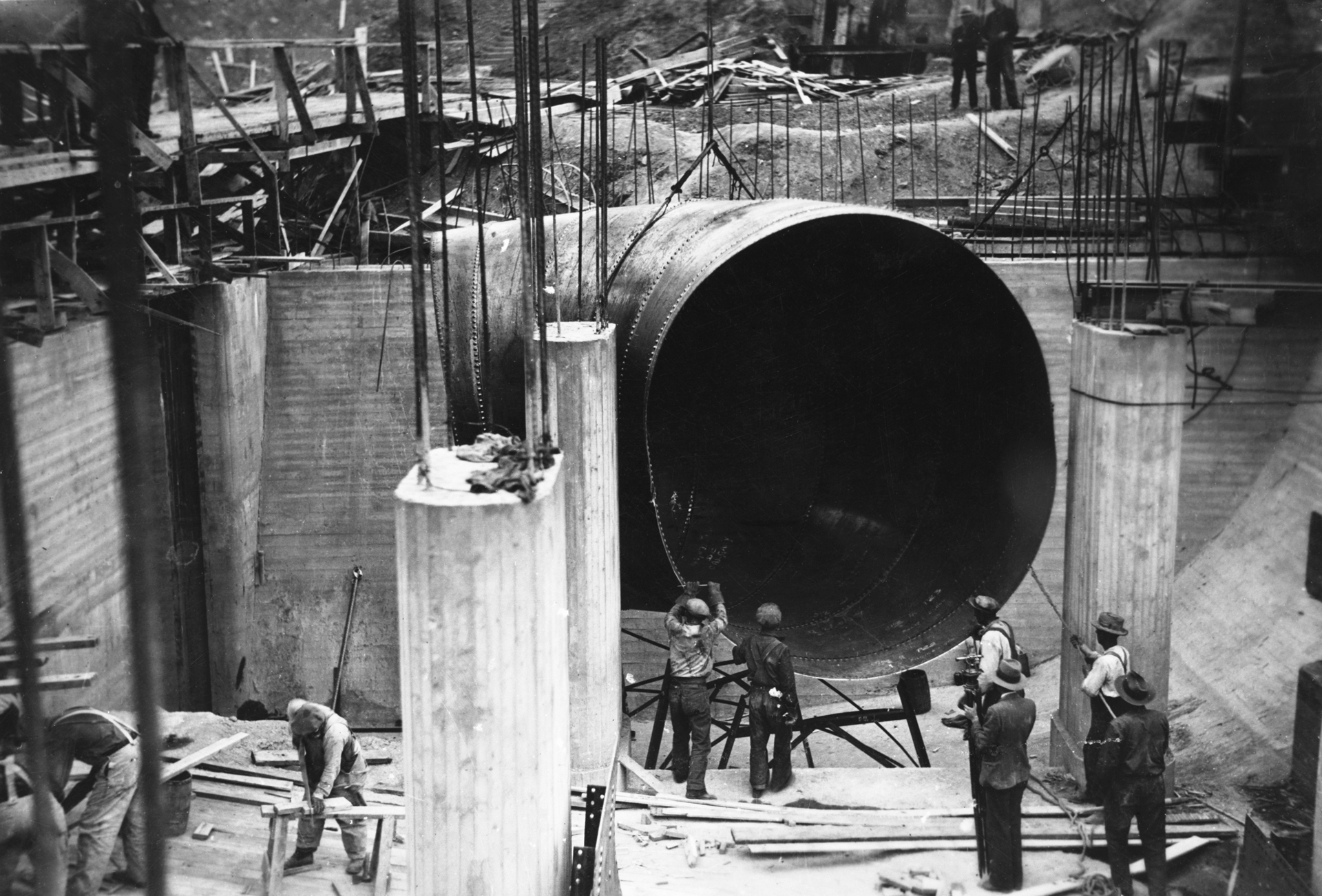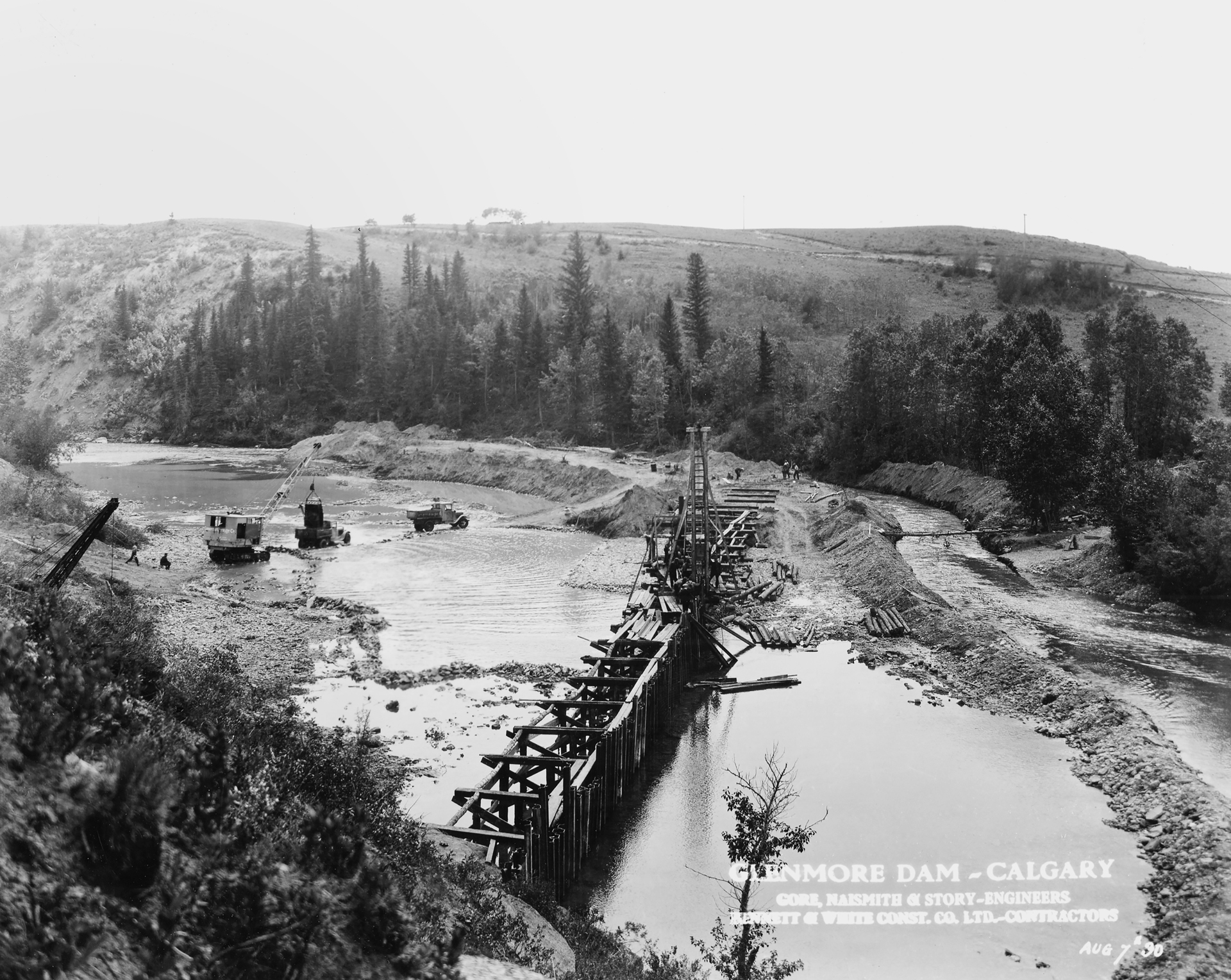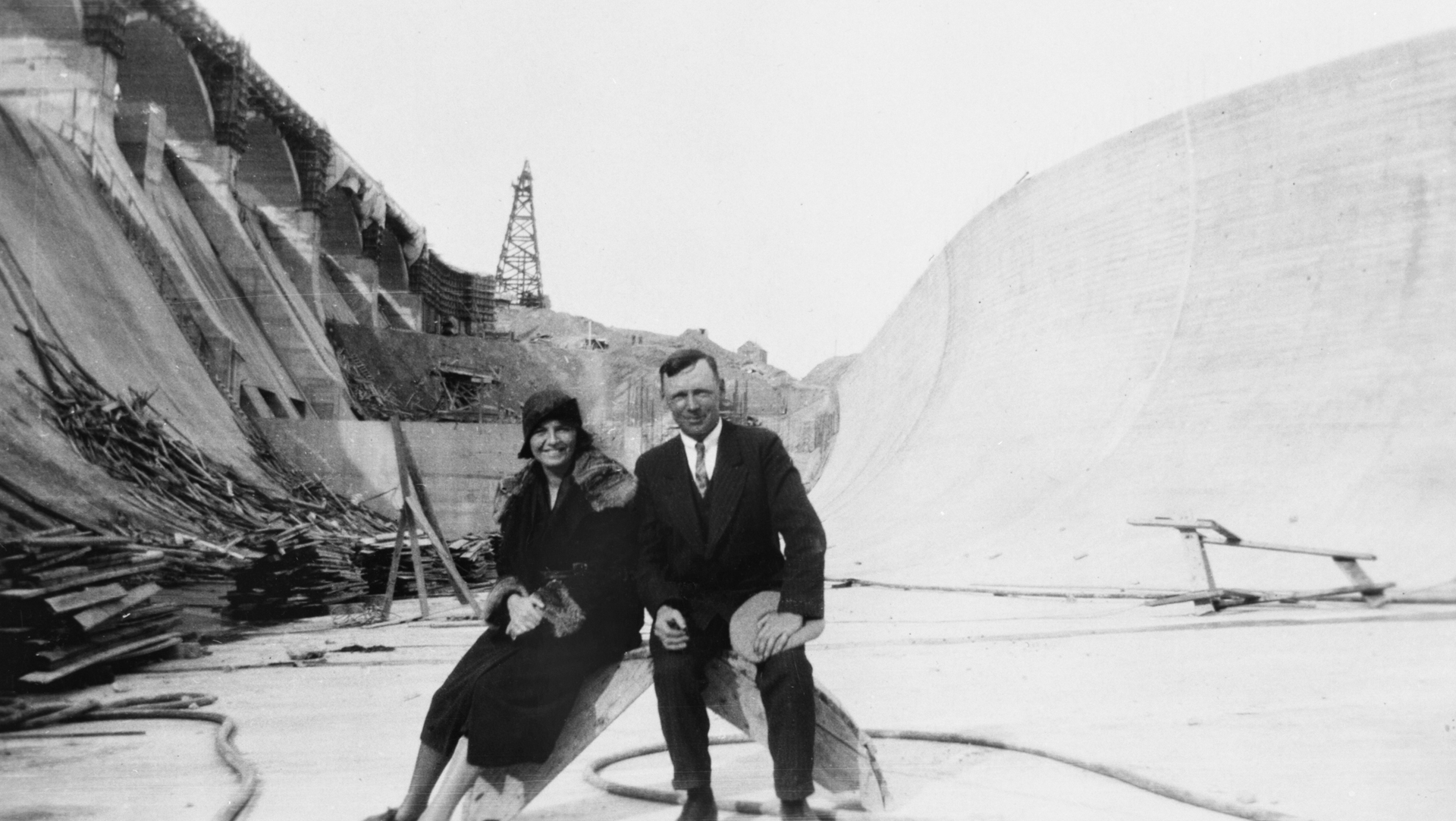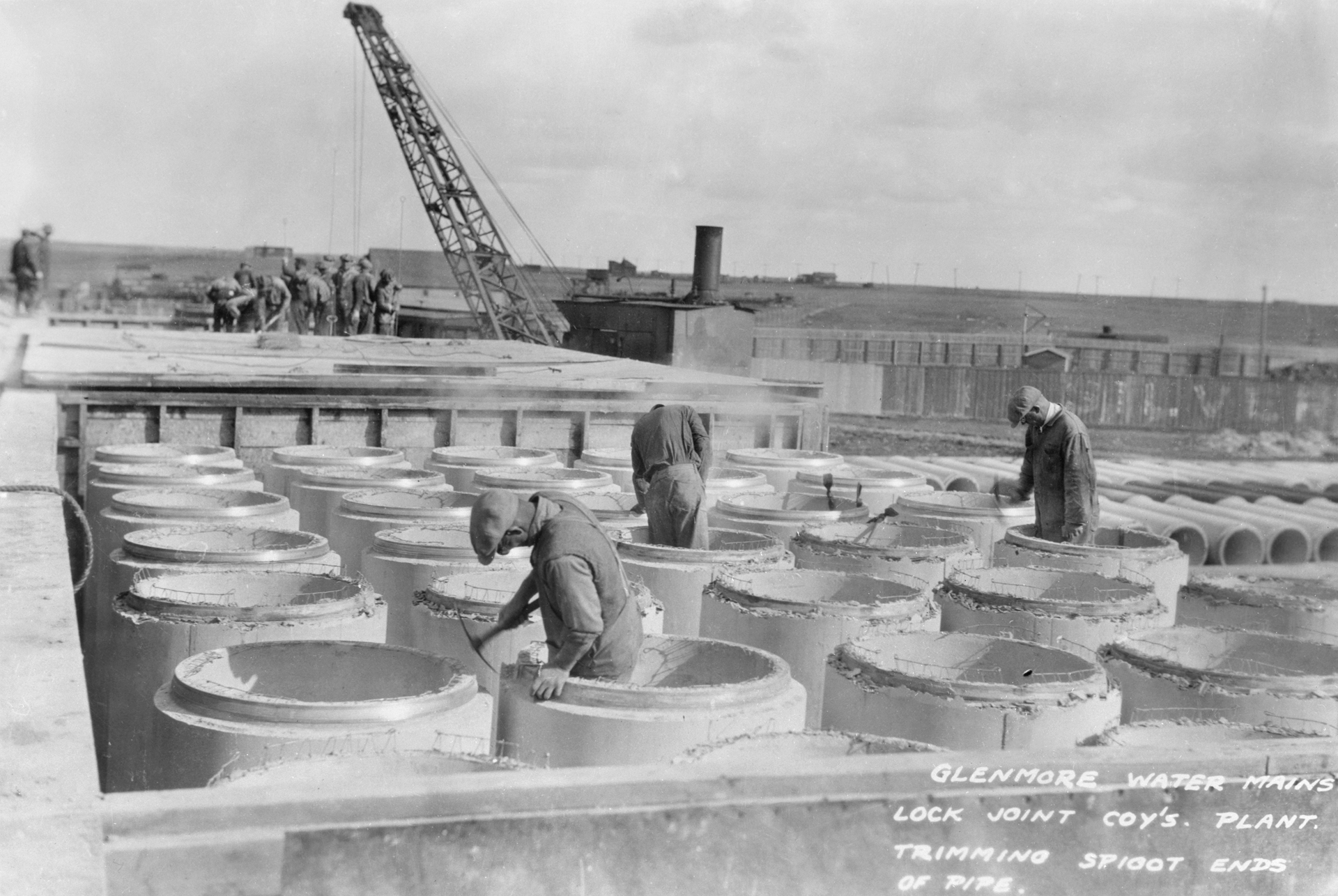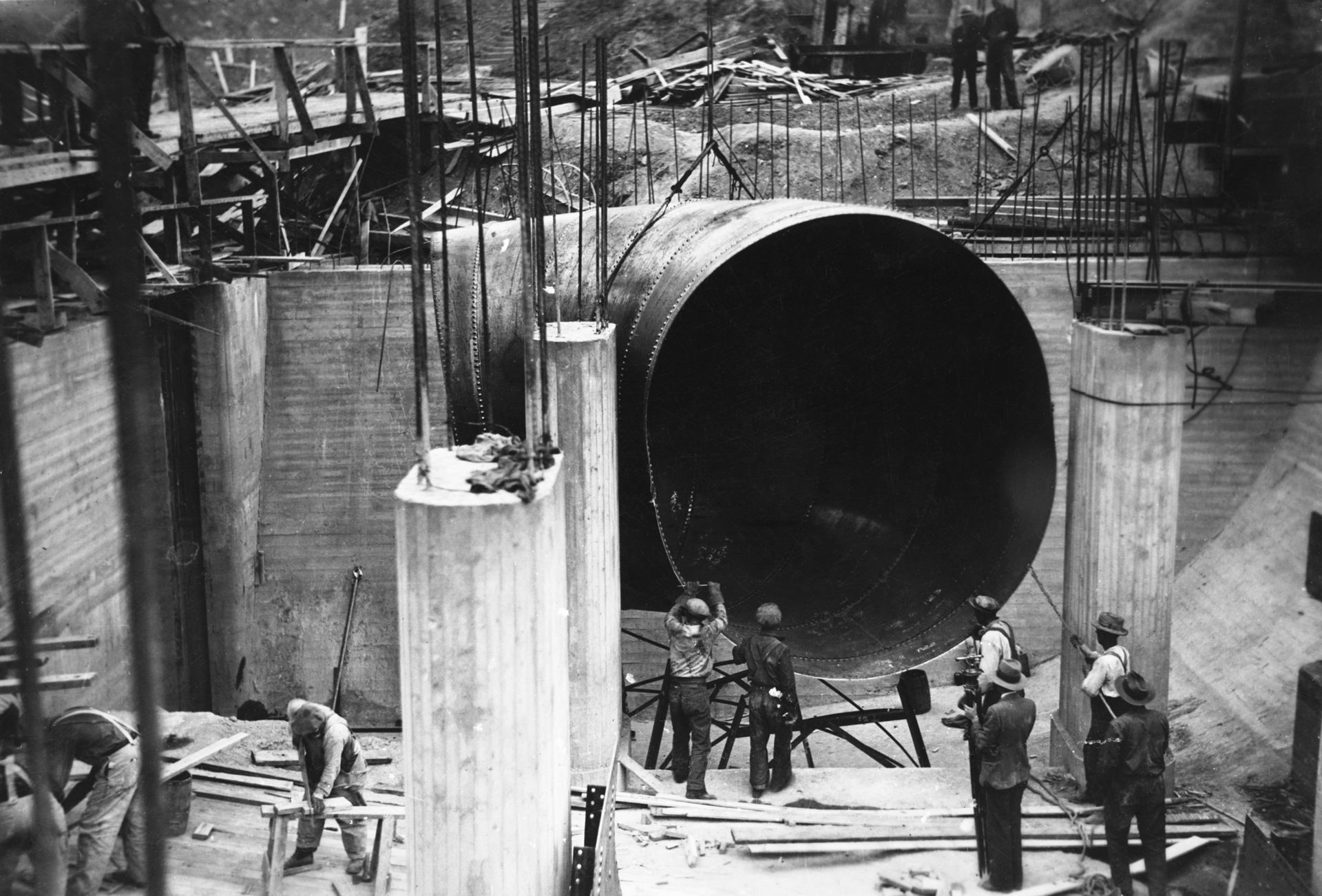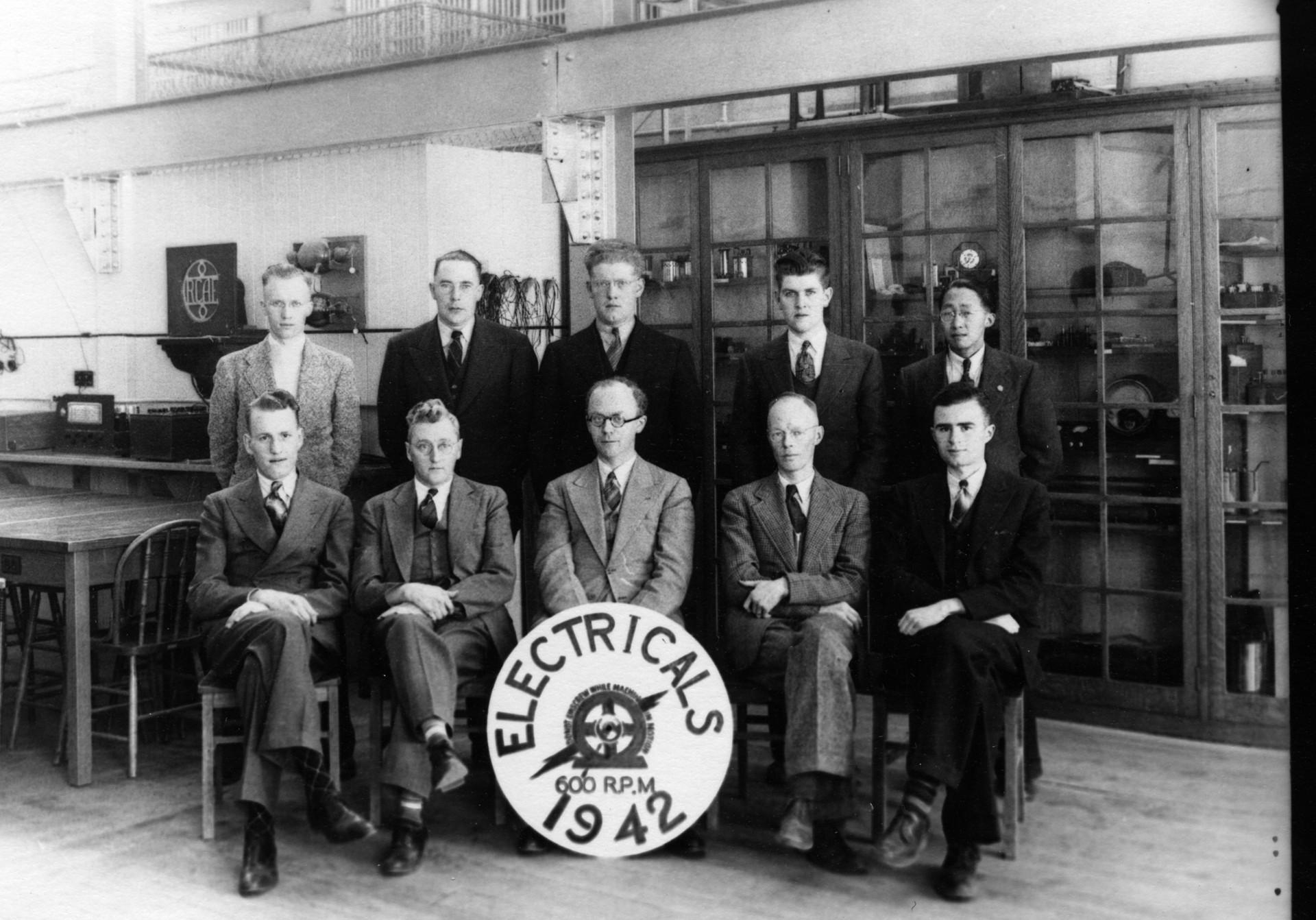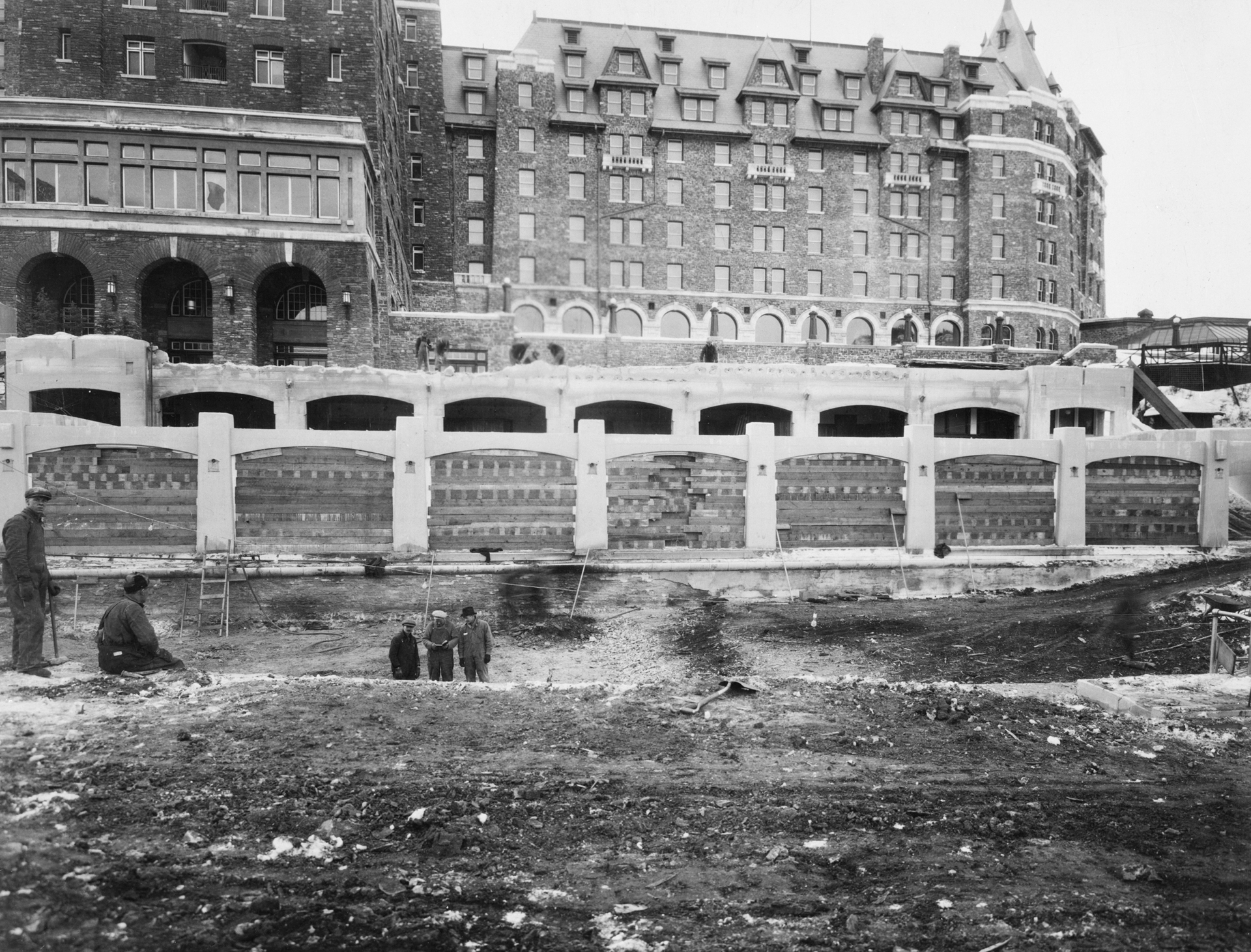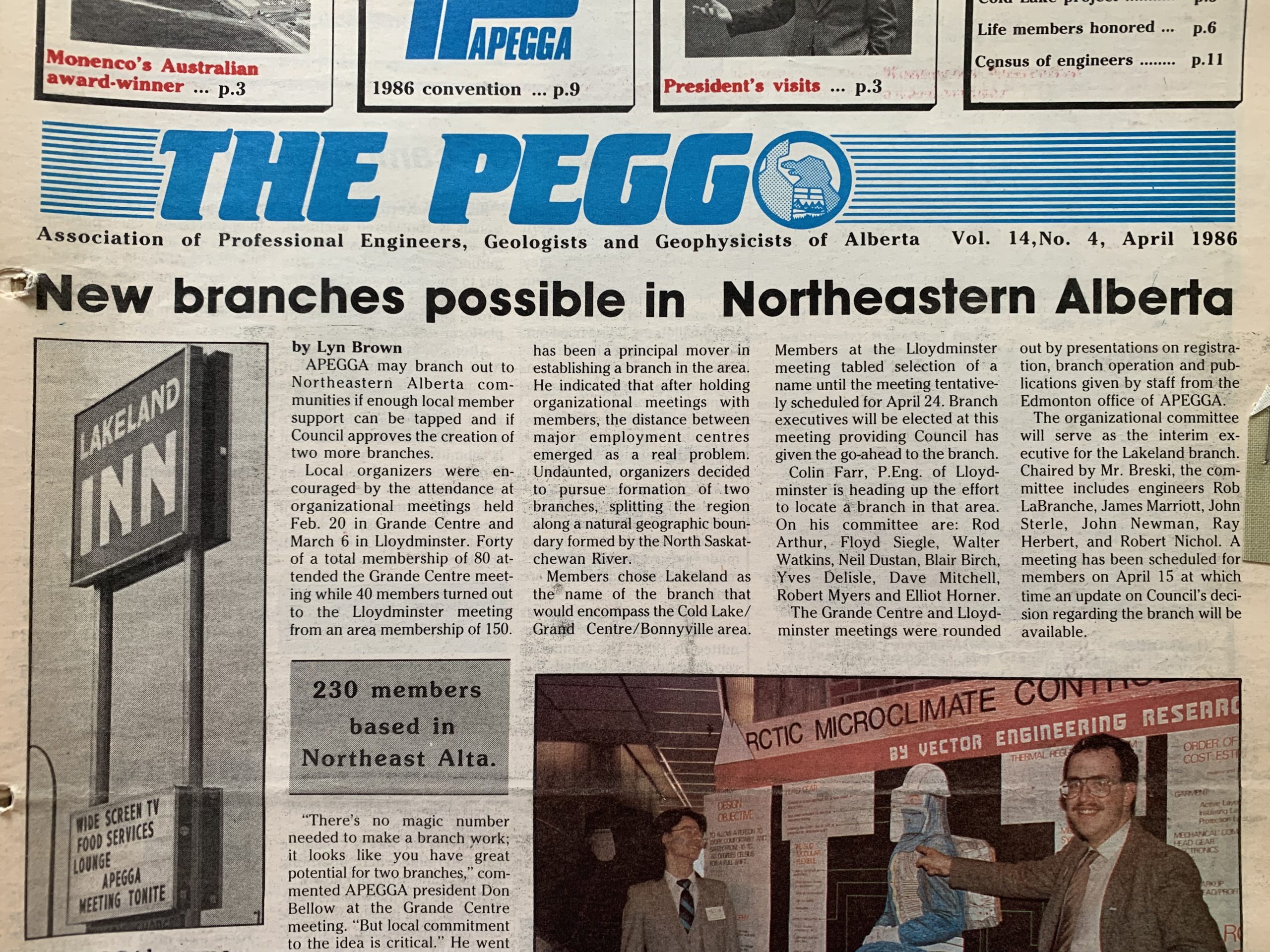Glenbow Archives NA-2597-51
Bighorn Dam Produces Its First Megawatt
In a picturesque valley on the windswept eastern slopes of the Rocky Mountains, Bighorn Dam produced its first megawatt of renewable power in 1972.
It may not be Alberta’s biggest hydroelectric dam, but it is our busiest, pumping out an average of 408,000 megawatt hours annually.
A steady water supply from the North Saskatchewan River allows Bighorn to outperform its older and larger sibling, the Brazeau Dam. Built in 1965, Brazeau’s annual energy production comes in just under Bighorn’s at about 394,000 megawatt hours.
Bighorn has another claim to fame. When the dam was built, it created Lake Abraham, a 32-kilometre–long reservoir that remains Alberta’s longest human-made lake.
Aerial footage of Bighorn Dam and Lake Abraham
All told, 22 hydroelectric dams in Alberta supply the province’s energy grid with a combined capacity of about 900 megawatts.
If you count all types of dams across Alberta, large and small, there are about 1,500 of them. But they don’t all generate electricity. They supply drinking water for municipalities and irrigation for agriculture. They control water supply and help with flood mitigation. They create recreation opportunities for citizens. They also contain and control waste—things like sewage and industrial tailings.
Engineering and geoscience professionals have played a significant role in the safe construction and maintenance of Alberta dams over the past 100 years, providing professional services for everything from bedrock mapping and site selection to structural design and technology upgrades.
Another iconic Alberta dam is Calgary’s Glenmore Dam on the Elbow River. In 1929, the city undertook an ambitious plan to build it, along with a related water treatment plant, to meet growing demands for a safe and steady supply of drinking water. At the time, it was among the most significant engineering projects embarked upon in Western Canada.
When completed in 1933, the dam was considered one of the strongest and heaviest of its kind in North America. The reservoir it created held an estimated 16.37 billion litres of water.
Today, 87 years later, Glenmore Dam remains essential to Calgary’s water infrastructure. Over the past three years, it has been undergoing an $82–million rehabilitation, thus ensuring an even longer legacy.
City of Calgary video on construction of the Glenmore Dam.
APEGA’S ROLE IN ALBERTA DAM SAFETY
In 1972, APEGA called upon the provincial government to improve dam safety regulations in Alberta.
In a presentation to cabinet, the association pointed out inadequacies in an existing system and recommended new dam safety legislation. The association also suggested the province develop and maintain an inventory of dams and retain plans and performance data.
The government accepted the recommendations and amended the Water Resources Act to permit the development of new dam safety legislation. On September 19, 1978, the Dam and Canal Safety Regulation was enacted, making Alberta the first province in Canada to have specific dam safety regulations.
Construction of the new Bassano Dam emergency spillway, which officially opened in 2019. The concrete spillway, replacing an old one made of earth, will help the 106-year-old dam withstand future floods.
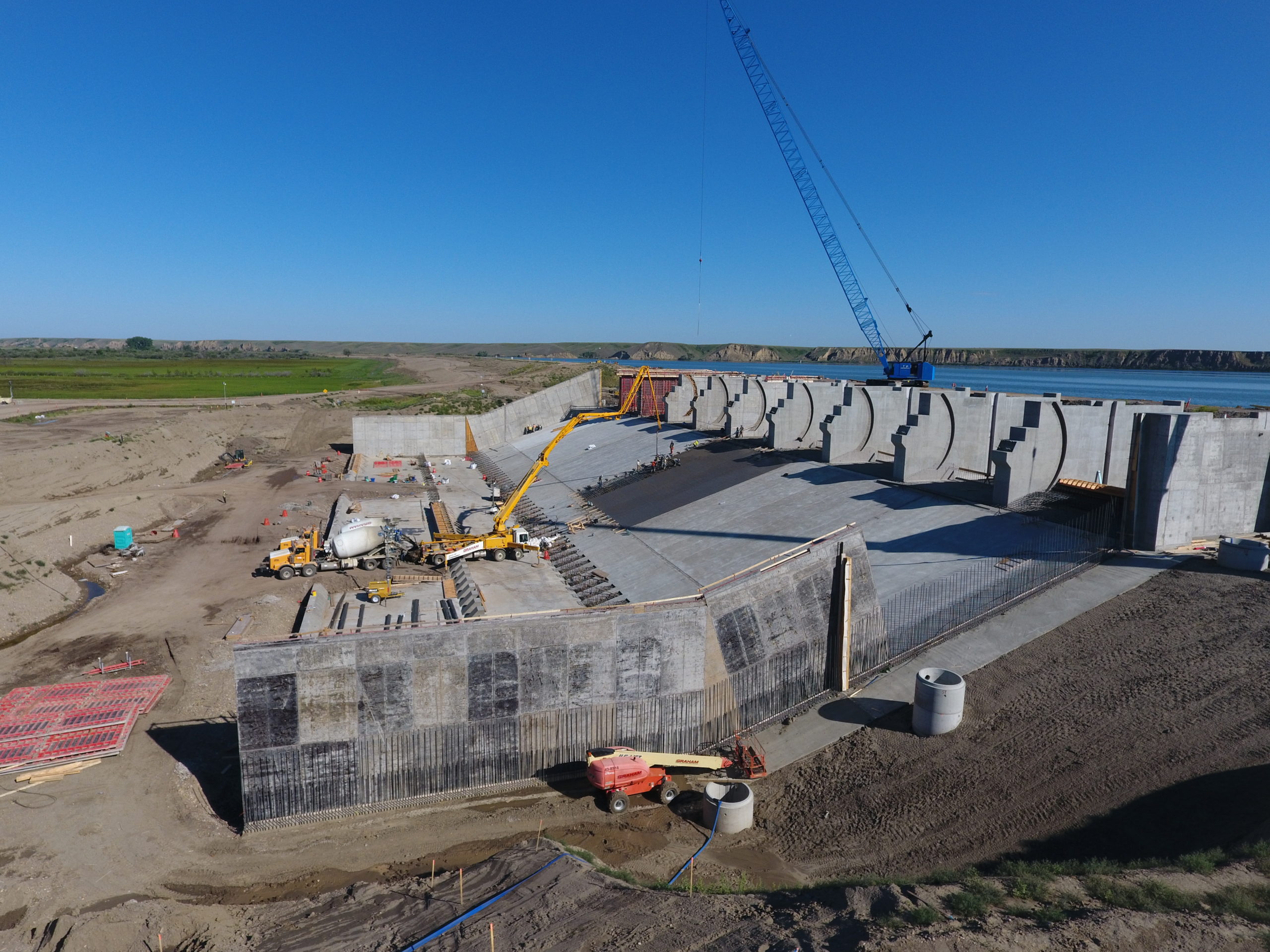
Photo courtesy of MPE Engineering
The wooden emergency spillway at Bullhorn Wasteway near Cardston, shown here in 2016, has been replaced with a concrete spillway to improve its ability to shed excess flood waters.
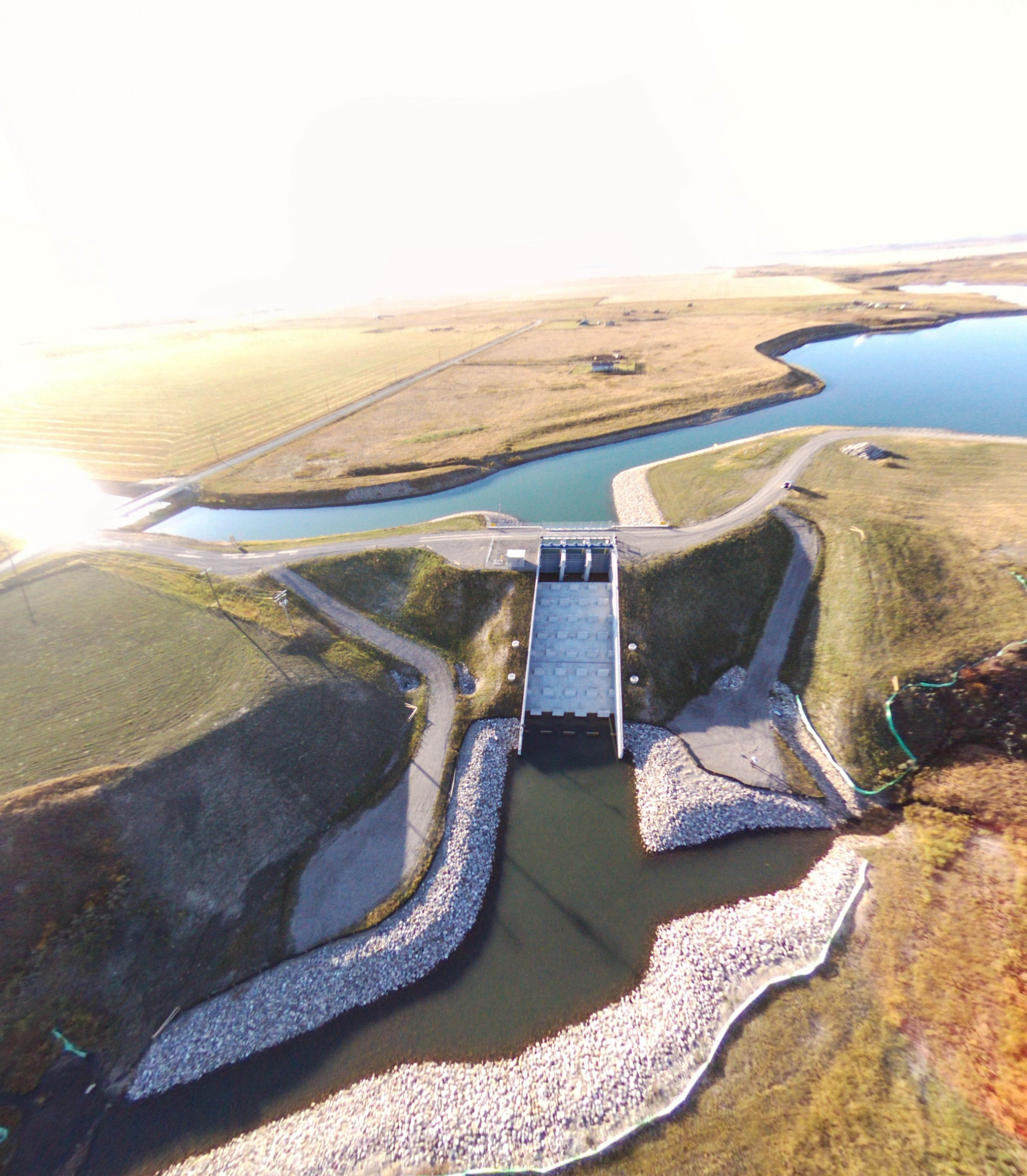
Photo courtesy of MPE Engineering
